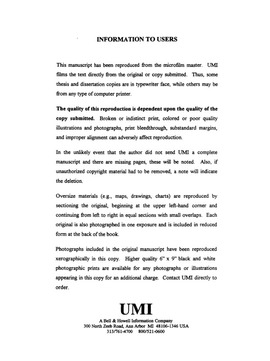| dc.contributor.advisor | Downard, John, | en_US |
| dc.contributor.author | Bartholomeusz, Geoffrey Arthur. | en_US |
| dc.date.accessioned | 2013-08-16T12:30:08Z | |
| dc.date.available | 2013-08-16T12:30:08Z | |
| dc.date.issued | 1998 | en_US |
| dc.identifier.uri | https://hdl.handle.net/11244/5681 | |
| dc.description.abstract | Analysis of the pattern of expression of developmentally regulated genes in the esg mutant background, suggests that E-signaling dependent events of development occur after 3 to 5 hours of development. It has been predicted that iso-15:0 may function as a signal molecule based on the observation that esg mutants do not develop and synthesize low levels of iso-15:0. By growing wild-type and esg mutant cells of M. xanthus with H$\sp3$-labeled branched-chain fatty acids we showed that esg mutant cells incorporated labeled leucine into lipids at no more than 11% of the wild-type cells. Levels of iso-15:0 incorporated into the phospholipids of the esg mutant cells were observed to be more than three times lower than those of wild-type cells. These results confirmed that the reduced synthesis of iso-15:0 in the esg mutant may be responsible for its developmental defect. If iso-15:0 is a signal molecule we predict that its levels would increase during the early stages of development. Analysis of leucine labeled free fatty acid fractions purified from developing wild-type cells showed that iso-15:0 is not released as a free fatty acid but is a component of a larger labeled species whose level remained relatively constant during the first ten hours of development. These labeled lipid species were biologically active and rescued development of an esg mutant. Iso-15:0 by itself was also biologically active. We propose that fatty acids or a combination of fatty acids and other lipid compounds synthesized during vegetative growth in the esg-dependent pathway may function as signal molecules during development of M. xanthus. A nutritional dependent fatty acid response occurs in M. xanthus. We observed that esg gene expression and BCKAD activity were under nutritional regulation and was responsible for the changing fatty acid composition of the cell. Esg mutants failed to respond to nutritional changes. We conclude that the BCKAD is required for the nutrition dependent fatty acid response in M. xanthus. | en_US |
| dc.format.extent | xviii, 162 leaves : | en_US |
| dc.subject | Biology, Cell. | en_US |
| dc.subject | Biology, Microbiology. | en_US |
| dc.subject | Myxococcus xanthus. | en_US |
| dc.subject | Lipids Synthesis. | en_US |
| dc.subject | Fatty acids. | en_US |
| dc.subject | Biology, Genetics. | en_US |
| dc.subject | Gene expression. | en_US |
| dc.title | Study of the role of the Myxococcus xanthus ESG locus in development and lipid biosynthesis. | en_US |
| dc.type | Thesis | en_US |
| dc.thesis.degree | Ph.D. | en_US |
| dc.thesis.degreeDiscipline | Department of Microbiology and Plant Biology | en_US |
| dc.note | Major Adviser: John Downard. | en_US |
| dc.note | Source: Dissertation Abstracts International, Volume: 59-07, Section: B, page: 3218. | en_US |
| ou.identifier | (UMI)AAI9839815 | en_US |
| ou.group | College of Arts and Sciences::Department of Microbiology and Plant Biology | |
